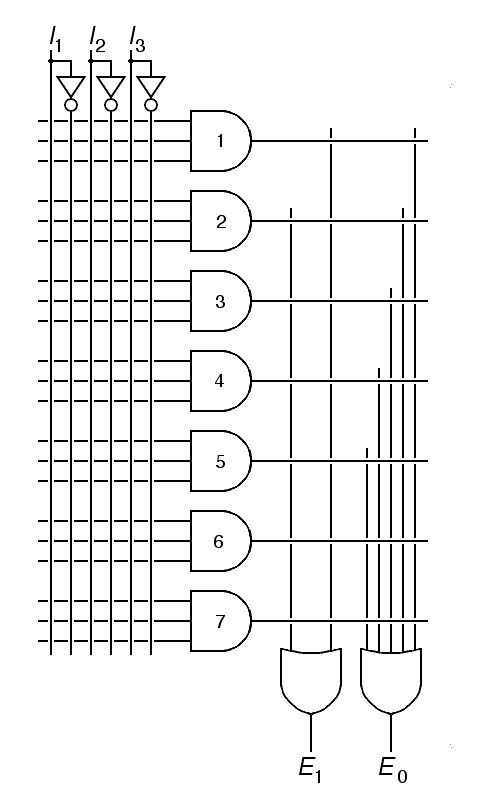a) Write a sequence of short Hawk instructions that is equivalent to LIL R3,1500. (2 points)
____________ ____________ ; _________________________________________
____________ ____________ ; _________________________________________
____________ ____________ ; _________________________________________
____________ ____________ ; _________________________________________
____________ ____________ ; _________________________________________
b)
What is the worst case number of short instructions required to load
an arbitrary 32-bit constant into a register on the Hawk? (1 point)
________________________________________________________c) Write a sequence of short Hawk instructions that is equivalent to L: LEA R3,L. The new version will, of course, take more than one instruction; it should load R3 with the address of the first instruciton in the sequence. If you need a temporary register, use R1. (2 points)
____________ ____________ ; _________________________________________
____________ ____________ ; _________________________________________
____________ ____________ ; _________________________________________
____________ ____________ ; _________________________________________
____________ ____________ ; _________________________________________
____________ ____________ ; _________________________________________
____________ ____________ ; _________________________________________
____________ ____________ ; _________________________________________
| inputs | outputs | |||||
| I1 | I2 | I3 | Iout | E1 | E0 | |
Each device has an interrupt request line, I1, I2, and I3. The priority encoder has 3 outputs, Iout, which is one if any of the inputs are 1, and <E1, E0>, a 2-bit code indicating which interrupt request should be acknowledged. E is unspecified if no interrupt is being requested. If just interrupt request Ii is true, E = i. In cases where multiple interrupt requests are true, E will be set to the lowest of the pending interrupts, so for example, if I1 is true, then E = 1 regardless of the others.
a)
Complete the truth table for this circuit in the table to the right
(2 points)

|
b) Give the logic diagram for Iout as a function of I1, I2 and I3 in the space below. (1 points)
c) Complete this logic diagram for E1 and E0 as a function of I1, I2 and I3 by adding appropriate dots to the figure at the right.
Note: Only seven and gates are provided because the output
is unspecified for the input combination 000. This omission helped
to fit the figure on the page!
(2 points)
EXHAND = 0 ; one word, the address of the handler EXAR = 4 ; one word, the handler's activation record EXSIZE = 8 ; the total size of an exception recordConsider the following alternative model. The global variable is just one word, a pointer to the exception description record (still defined as above), perhaps declared as:
COMMON PCONSTRAINT_ERROR, 4 ; pointer to the exception record PPCONER:W PCONSTRAINT_ERROR ; pointer to the pointer!
a) Write code to raise constraint error using this new model. This code will only resemble the code given for the general case in Chapter 12. (2 points)
____________ ____________ ; _________________________________________
____________ ____________ ; _________________________________________
____________ ____________ ; _________________________________________
____________ ____________ ; _________________________________________
____________ ____________ ; _________________________________________
____________ ____________ ; _________________________________________
b) Consider a subroutine that installs an exception handler using this new data structure. What fields must be included in the activation record of this subroutine? For each field, briefly describe its use! (1 point)
________________________________________________________ ________________________________________________________ ________________________________________________________
a) What value should the level field have inside the memory management unit trap service routine if that trap service routine requires the completion of input-output data transfers that are accomplished using interrupts? (1 point)
________________________________________________________
b) Write code, suitable for inclusion in the MMU trap-service routine right after all the registers have been saved, to set the level field to the value you have suggested in part a). (2 points)
____________ ____________ ; _________________________________________
____________ ____________ ; _________________________________________
____________ ____________ ; _________________________________________
____________ ____________ ; _________________________________________
____________ ____________ ; _________________________________________
|___|___|___|___|___|___|___|___| |___|___________|_______________| S EXP MANT
S -- the sign of the signed-magnitude mantissa
EXP -- the exponent, a 3-bit biased integer
MANT -- the mantissa, a 4-bit fixed point fraction
There are no hidden bits and the bias is the natural bias on 3-bits.
The maximum positive value in this system is
15/16 x 23 = 7.5
while the smallest nonzero value is
1/16 x 2-4 = 1/256.
A fixed-point number system representing this range of values would take
at least 12 bits per sample (including sign), with 8 bits of fraction.
The fastest way to convert from these 8-bit floating point values to the equivalent fixed point values is to use a table lookup. Assume that the table is called CONVERT and that it is in ROM with the program:
CONVERT: H #0000 ; +0.00 in hex
H #0001 ; +0.01
... ; the table goes on for 256 entries
The Problem: Given a floating point number, in this format, in R3, convert it to the corresponding fixed point binary value, leaving the result in R3. Don't forget to sign-extend the result to 32 bits! (2 points)
____________ ____________ ; _________________________________________
____________ ____________ ; _________________________________________
____________ ____________ ; _________________________________________
____________ ____________ ; _________________________________________
____________ ____________ ; _________________________________________
____________ ____________ ; _________________________________________
____________ ____________ ; _________________________________________
____________ ____________ ; _________________________________________